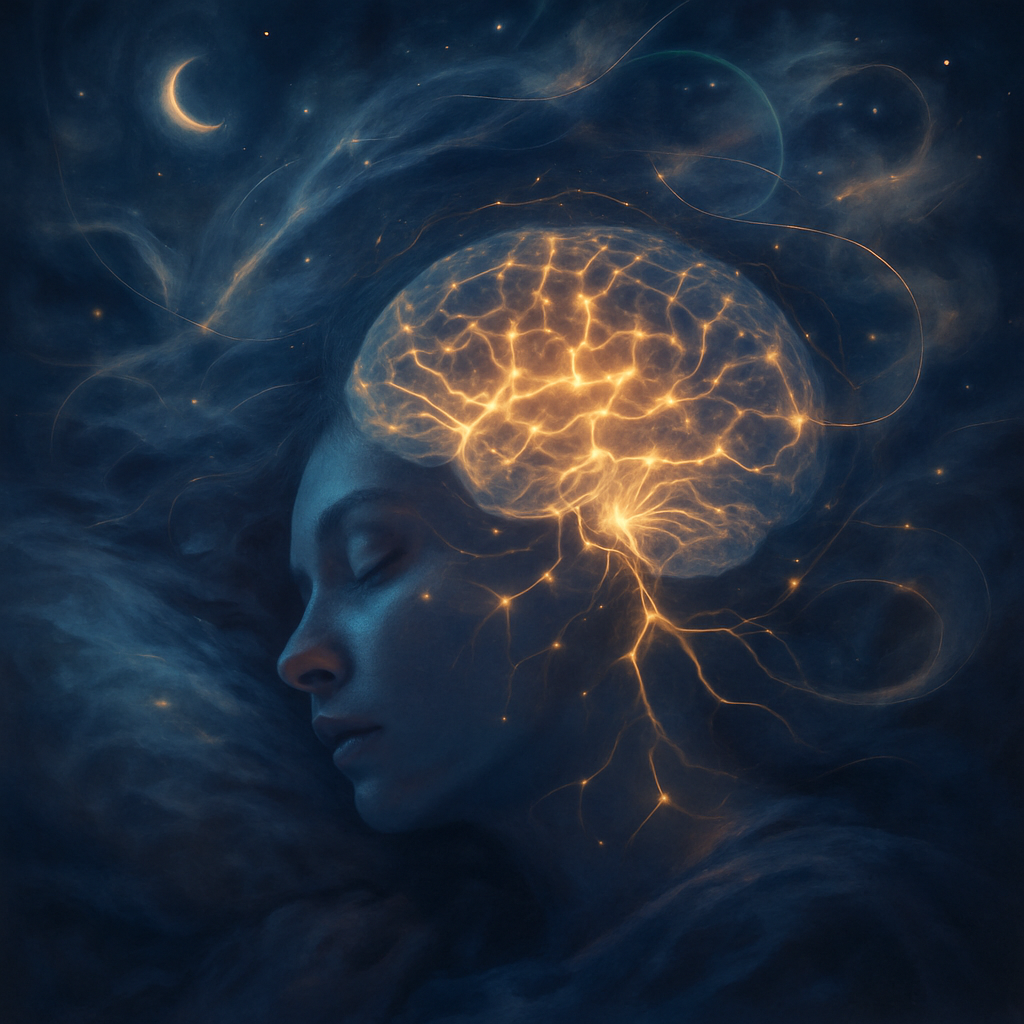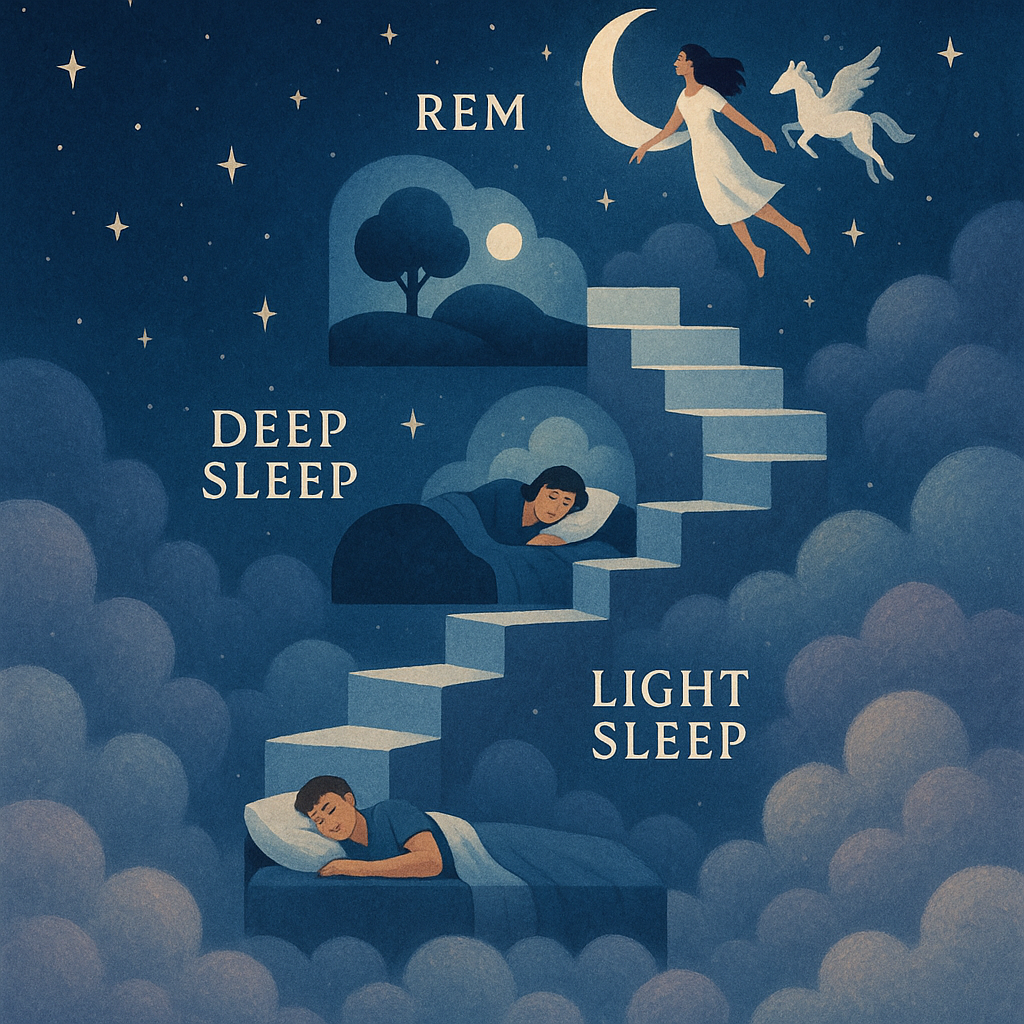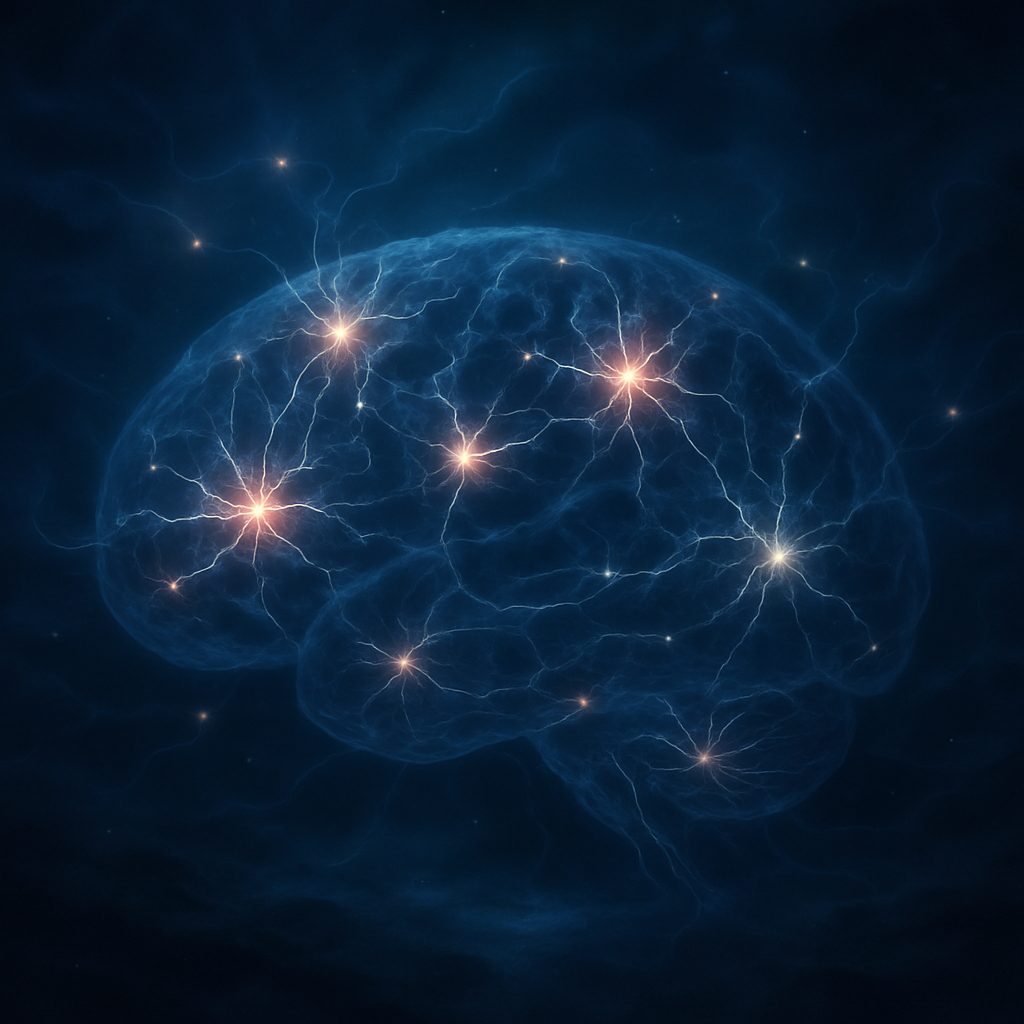.jpg)
Dreams are among the most mysterious and fascinating aspects of human consciousness. Every night, as we drift into sleep, our minds embark on extraordinary journeys through surreal landscapes, impossible scenarios, and vivid emotional experiences. We might find ourselves flying through the air, conversing with long-lost friends, or navigating bizarre situations that defy all logic—only to wake up wondering what just happened and why our brains insisted on creating these elaborate nocturnal narratives.
For centuries, humans have pondered the meaning and purpose of dreams. From ancient civilizations that viewed dreams as messages from gods to modern neuroscientists mapping brain activity during sleep, the quest to understand why we dream has captivated minds across cultures and eras. While we've made remarkable progress in understanding the mechanisms of dreaming, many fundamental questions remain tantalizingly unanswered.

At its most fundamental level, a dream represents a sequence of thoughts, images, emotions, and sensations that occur involuntarily during sleep. Everyone dreams two hours nightly, spending this time in an altered state of consciousness, even though many people don't remember their dreams upon waking. Dream content varies dramatically between individuals and can be influenced by numerous factors including stress, medication, and sleep quality.
Dreams occur across different stages of sleep, but they are most prominent and vivid during Rapid Eye Movement (REM) sleep—a unique phase characterized by increased brain activity, rapid eye movements behind closed eyelids, and temporary muscle paralysis that prevents us from acting out our dreams. REM sleep shows highest brain activity with neural activity often exceeding levels seen during wakefulness.
However, dreaming isn't confined exclusively to REM sleep. Dreams occur during non-REM stages as well, though these tend to be less vivid, more fragmented, and more closely tied to recent memories and experiences. This discovery has challenged the traditional assumption that REM sleep is the sole physiological equivalent of dreaming, revealing instead that dreaming represents a more complex phenomenon controlled by multiple brain mechanisms.
The complexity of dream content has fascinated researchers for decades. Memories ripple through sleeping brains incorporating elements from recent experiences, distant memories, and even concerns about future events, creating a unique cognitive blend that reflects the brain's remarkable ability to process and integrate information across time periods.
Understanding why we dream requires examining the intricate neural choreography that unfolds during sleep. Brain activity peaks during REM with certain brain regions becoming as active as—or even more active than—they are during wakefulness, while others become notably quiet.

During REM sleep, several key brain structures spring into heightened activity:
The Limbic System: Structures including the amygdala (emotion processing) and hippocampus (memory formation) show increased activation. This heightened emotional and memory-related activity helps explain why dreams often feel intensely emotional and frequently incorporate elements from recent experiences.
The Visual Cortex: Despite our eyes being closed, visual processing areas become highly active during REM sleep, generating the rich imagery that characterizes most dreams.
The Brain Stem: The pons and other brainstem structures orchestrate the complex neurochemical changes that initiate and maintain REM sleep, while also coordinating the muscle paralysis that prevents dream enactment.
Visual cortex creates brain movies during REM sleep with patterns remarkably similar to those seen when viewing complex visual scenes while awake, providing neurological evidence for the vivid visual nature of many dreams.
The study of brain waves has revolutionized our understanding of sleep stages and dreaming. Sleep stages show distinct wave patterns with different sleep stages characterized by unique brain wave signatures. During REM sleep, brain waves become fast and irregular, resembling waking patterns, while non-REM stages show progressively slower, more synchronized waves.
Sleep spindles coordinate memory transfer with specific brain wave patterns appearing crucial for memory consolidation during non-REM sleep. These brain waves seem to coordinate the transfer of information between different brain regions, potentially explaining why dream content often combines disparate memories and experiences.
Simultaneously, prefrontal cortex activity decreases with the dorsolateral prefrontal cortex—the brain region responsible for logical reasoning, critical thinking, and reality testing—showing reduced activity during REM sleep. This reduction in prefrontal function helps explain several characteristic features of dreams:
Dr. Suzanne Gorovoy, a clinical sleep psychologist, explains:
In REM sleep, the brain is sorting memories and emotions. The part that questions reality is quiet—so we accept impossible dream logic without blinking.
In other words, dreams defy logic because your brain is not using that part of your mind to process the day's memories and emotions.
The dreaming brain operates under a unique neurochemical environment. Acetylcholine dominates during REM sleep with an abundance of this neurotransmitter, combined with a near-complete absence of norepinephrine, serotonin, and histamine. This specific neurochemical cocktail contributes to the vivid, emotionally charged, and often bizarre nature of dreams while also facilitating the memory processing that may represent one of dreaming's primary functions.
Neurochemicals affect dream formation with the absence of certain neurotransmitters contributing to the often fragmented and surreal nature of dream narratives.
Despite decades of research, the question of why we dream remains one of neuroscience's most intriguing mysteries. No single answer explains dreaming but several compelling theories have emerged, each supported by substantial evidence.
The modern scientific approach to understanding dreams began with Sigmund Freud's groundbreaking work "The Interpretation of Dreams" in 1900. While many of Freud's specific theories about dream symbolism and wish fulfillment have been revised or abandoned, his fundamental insight that dreams reflect meaningful psychological processes laid the foundation for contemporary dream research.
Modern neuroscience supersedes Freudian theories focusing on the biological and cognitive functions of dreaming rather than symbolic interpretation. However, the field still grapples with questions about whether dreams carry symbolic meaning or represent more straightforward neural processing activities.
One of the most well-supported theories suggests that dreams help us process emotions and regulate mood. Dreaming improves morning mood with compelling evidence that dreaming after emotional experiences helps people feel better the next morning.
Dr. Daniel Jin Blum, a sleep researcher and clinical psychologist, puts it like this:
Dreams are your brain's way of cleaning house. We process emotional material, test out scenarios, and file memories. It's like overnight therapy—without the bill.
Ultimately, he means that dreams are part of your brain's natural emotional processing. The emotional processing theory is supported by observations that dreams often contain more negative emotions than positive ones, with dreams contain 65% negative emotions showing that approximately 65% of dreams involve sadness, apprehension, or anger, compared to only 20% involving happiness or excitement. This pattern suggests dreams may serve as a mental rehearsal space for processing challenging emotions and experiences.
Dreams affect waking emotional regulation with the emotional content processed during dreams having lasting effects on waking emotional regulation, suggesting that healthy dreaming may be essential for psychological well-being.
Perhaps the most extensively researched theory proposes that dreams reflect and facilitate memory consolidation—the process by which temporary memories are stabilized and integrated into long-term storage. Sleep optimizes memory processing providing an optimal neurophysiological state for memory processing, allowing memory networks to be reactivated without interference from new sensory input.
Dreaming about tasks improves performance with studies demonstrating that dreaming about recently learned tasks is associated with enhanced memory performance, providing strong evidence that dreams reflect memory consolidation processes. A meta-analysis of multiple studies found that people who dream about learning tasks show better subsequent performance, suggesting dreams play an active role in strengthening newly acquired skills and knowledge.
The memory consolidation process during dreaming appears to involve several mechanisms:
Memory Replay: Brain activity patterns replay with patterns of brain activity seen during waking learning being "replayed" during sleep, helping to strengthen neural pathways associated with new memories.
Integration with Existing Knowledge: Dreams often combine recent experiences with older memories, potentially facilitating the integration of new information with existing knowledge structures.
Selective Consolidation: Dreams determine memory importance with evidence suggesting that dreams may help determine which memories are worth preserving and which can be discarded, serving as a kind of neural "triage" system.
Sleep clears brain toxins with this memory consolidation process being crucial not only for learning but also for brain health, as it helps clear metabolic waste products that can accumulate during waking hours.
Dreams have long been associated with creative insights and problem-solving breakthroughs. Famous examples include:
Dr. Michael Grandner, a professor of neuroscience, adds:
Lucid dreaming is one of the few ways we can consciously interact with our dreams. For some people, it helps reduce nightmares or sparks creativity.
What he means is naps enhance creative problem-solving with people who nap and dream after learning new tasks often showing enhanced creative problem-solving abilities compared to those who remain awake, providing experimental support for the creativity-enhancing effects of dreams.
The threat simulation theory proposes that dreams serve an evolutionary function by allowing us to practice responses to dangerous or challenging situations in a safe environment. This theory suggests that the high frequency of negative emotions and threatening scenarios in dreams reflects an adaptive mechanism that helped our ancestors prepare for real-world dangers.
Supporting evidence includes:
While we may no longer face the same physical threats as our ancestors, this rehearsal function may still serve important purposes in helping us navigate complex social situations and emotional challenges.
Some researchers propose that dreams represent a byproduct of essential neural maintenance processes that occur during sleep. Sleep maintains brain health serving crucial functions in clearing metabolic waste from the brain, maintaining neural connections, and supporting overall brain health.
This maintenance theory is particularly compelling when considering brain development. Newborns spend most time in REM with research showing that newborns spend most of their sleep time in REM sleep, suggesting this stage plays a crucial role in early brain development and neural organization.
Glymphatic system clears brain waste with findings revealing that during sleep, the brain's glymphatic system becomes highly active, flushing out toxic proteins and metabolic waste. This process may be particularly important during REM sleep and dreaming, supporting the brain maintenance theory.
Understanding when and how dreams occur requires examining the architecture of sleep itself. Sleep stages show distinct characteristics with researchers identifying distinct sleep stages, each associated with different types of dreaming experiences and characterized by unique brain wave patterns.

Non-REM sleep comprises about 75% of total sleep time and includes three progressively deeper stages. Dreams during non-REM sleep tend to be:
Non-REM dreams reflect episodic memories often featuring complete episodic memories and tending to follow more logical progressions, possibly reflecting different types of memory processing occurring during these sleep stages.
The brain waves during non-REM sleep show characteristic patterns that correlate with dream content. Slow waves consolidate factual memories with studies showing that slow waves during deep sleep are associated with the consolidation of factual memories, while the dream content during these periods often reflects recently learned information.
REM sleep, comprising about 25% of total sleep time, is characterized by the most vivid and memorable dreams. These dreams typically feature:
REM dreams remembered more easily with studies showing that REM dreams are more likely to be remembered, particularly when awakening occurs directly from REM sleep.
REM brain creates novel scenarios with research demonstrating that during REM sleep, the brain shows remarkable creativity in generating novel scenarios and combining memories in unexpected ways, contributing to the often surreal nature of REM dreams.
Sleep follows a cyclical pattern, with REM and non-REM stages alternating approximately every 90-120 minutes throughout the night. Interestingly, REM periods become longer and more frequent toward morning, which is why many people report their most vivid dreams occurring in the early morning hours.
For those interested in optimizing their sleep cycles and dream experiences, understanding sleep patterns and timing can be valuable for both sleep quality and dream recall.
Numerous factors can affect dream content, frequency, and intensity, ranging from lifestyle choices to medical conditions and environmental influences.
Psychological stress represents one of the most significant influences on dream content. Stress increases vivid emotional dreams with people experiencing stress or anxiety being more likely to have vivid, emotionally intense dreams, including nightmares.
Stress can affect dreams through multiple pathways:
For individuals experiencing stress-related sleep disruptions, implementing sleep anxiety management strategies can help improve both sleep quality and dream experiences.
Sleep deprivation amplifies anxiety with research showing that sleep deprivation and disrupted dream patterns can create a vicious cycle with anxiety and stress, emphasizing the importance of maintaining healthy sleep habits for emotional well-being.
Various lifestyle choices can significantly impact dream experiences:
Diet and Timing: Late-night eating can affect sleep quality and potentially influence dream content. Heavy meals close to bedtime may lead to more vivid or disturbing dreams.
Alcohol Consumption: While alcohol may initially promote sleepiness, it significantly disrupts REM sleep and can lead to more fragmented, intense dreams during rebound REM periods later in the night.
Exercise: Regular physical activity generally promotes better sleep quality, though intense exercise close to bedtime may increase arousal and affect dream patterns.
Sleep Environment: Creating optimal sleep conditions including appropriate temperature, darkness, and minimal noise disruption can promote more natural sleep cycles and healthier dream patterns.
Environmental factors influence dreams with studies showing that even subtle environmental factors during sleep can influence dream content, with sounds, smells, and temperature changes potentially incorporating themselves into dream narratives.
Sleep medicine practitioners increasingly recognize the importance of considering dream experiences when prescribing medications or treatments, as changes in dream patterns can significantly impact patient satisfaction and treatment compliance.
Antidepressants: Particularly SSRIs can suppress REM sleep and reduce dream recall, though vivid dreams may occur during withdrawal periods.
Sleep Medicine Interventions: Various sleep aids can affect sleep architecture and dream frequency, sometimes leading to unusual dream experiences. Sleep medicine professionals must carefully balance the benefits of improved sleep with potential effects on dream patterns.
Substances: Caffeine, nicotine, and other stimulants can fragment sleep and intensify dreams, while substances like marijuana may suppress REM sleep acutely but lead to vivid dreams during withdrawal.
Natural Supplements: Melatonin supplementation can affect sleep timing and potentially influence dream patterns, though effects vary among individuals.
Dream patterns change significantly across the lifespan:
Children: Young children typically experience more REM sleep and may report more animal characters and threatening scenarios in their dreams.
Adolescents: Teenagers often experience intense, emotional dreams, possibly related to hormonal changes and brain development.
Adults: Dream content tends to become more realistic and less bizarre with age, though emotional processing remains important.
Elderly: Older adults may experience changes in sleep architecture that affect dream frequency and recall.
Research from the University of Montreal has tracked dream patterns across the lifespan, revealing that while dream frequency may decrease with age, the emotional significance of dreams often remains consistent.
Beyond ordinary dreaming, researchers have identified several distinct dream-related phenomena that provide additional insights into the dreaming mind.
Lucid dreams occur when dreamers become aware they are dreaming while still remaining asleep. Lucid dreamers control dream content with research indicating that lucid dreams can sometimes allow dreamers to exert conscious control over dream content, making this phenomenon particularly valuable for studying the relationship between consciousness and dreaming.
The experience of lucid dreams has fascinated both researchers and dreamers for decades. Brain activity increases during lucid dreams with studies showing that during lucid dreams, there's increased activity in brain regions associated with self-awareness and metacognition, providing neurological evidence for the heightened consciousness reported by lucid dreamers.
Lucid dreams can be cultivated through various techniques:
While not everyone can easily achieve lucid dreams, research suggests they may offer benefits for reducing nightmares, enhancing creativity, and providing insights into the nature of consciousness itself. Lucid dreams treat nightmare disorders with clinical studies showing that lucid dreams can be particularly beneficial for individuals suffering from recurrent nightmares.
For those interested in exploring lucid dreams, specific sleep techniques can help increase the likelihood of achieving this unique state of consciousness.
The therapeutic potential of lucid dreams has led to their incorporation into certain sleep medicine practices, particularly for treating nightmare disorders and PTSD-related sleep disturbances.
Nightmares represent dreams with intensely negative emotional content that often cause awakening. While occasional nightmares are normal, frequent nightmares can significantly impact sleep quality and daytime functioning.
Common nightmare triggers include:
For those experiencing frequent nightmares, various treatment approaches have shown effectiveness:
Nightmares respond to treatment with research showing that nightmare frequency can be significantly reduced through targeted interventions, emphasizing the importance of treating persistent nightmare disorders as legitimate medical concerns.
Many people experience recurring dreams—similar dream scenarios that repeat over time. Recurring dreams reflect unresolved issues with research suggesting that recurring dreams often reflect unresolved psychological issues, ongoing stressors, or significant life transitions.
Common recurring dream themes include:
While the exact mechanisms underlying recurring dreams remain unclear, they may represent the brain's attempt to process persistent concerns or unresolved conflicts through repeated rehearsal scenarios.
Dreams aid emotional processing with contemporary research suggesting that recurring dreams may serve important functions in emotional processing and problem-solving, even when their symbolic content isn't immediately apparent to the dreamer.
These phenomena occur during the transition periods between wakefulness and sleep:
Hypnagogic Experiences: Occur while falling asleep and may include vivid imagery, auditory hallucinations, or the sensation of falling.
Hypnopompic Experiences: Occur while awakening and may involve brief continuation of dream imagery into waking consciousness.
Transitional states reveal memory processing with research indicating that these transitional states may provide unique insights into memory consolidation processes, as they often involve the replay or integration of recent experiences.
Sleep paralysis more common with studies showing that these transitional experiences are more common than previously thought and may represent important windows into the relationship between sleep and waking consciousness.
While we cannot completely control our dreams, various strategies can enhance dream recall, improve dream quality, and optimize the sleep conditions that support healthy dreaming.
Many people report rarely remembering their dreams, but several techniques can improve dream recall:
Dream Journals: Keeping a notebook by the bedside and immediately recording any dream fragments upon waking can dramatically improve recall over time.
Optimal Awakening: Dreams are most easily recalled when awakening occurs during or shortly after REM sleep periods. Understanding natural sleep cycles can help time awakenings for better recall.
Intention Setting: Simply intending to remember dreams before falling asleep can improve recall, suggesting that attention and motivation play important roles in dream memory.
Gradual Awakening: Allowing for gradual awakening rather than jarring alarm clocks can help preserve dream memories that might otherwise be lost in the abrupt transition to wakefulness.
Dream recall improves 300% with studies showing that people who practice these techniques consistently can increase their dream recall by up to 300% over several weeks.
Several factors can promote healthier sleep and, by extension, more restorative dream experiences:
Sleep Schedule Consistency: Maintaining regular sleep and wake times helps stabilize circadian rhythms and promotes natural sleep architecture.
Stress Management: Implementing effective stress reduction techniques can reduce nightmare frequency and promote more pleasant dream experiences.
Sleep Environment: Creating a comfortable sleep environment with appropriate temperature, darkness, and minimal disruptions supports natural sleep cycles.
Avoiding Dream Disruptors: Limiting alcohol, avoiding late-night meals, and being mindful of medications that might affect sleep can promote healthier dream patterns.
While most dream experiences are normal and healthy, certain situations warrant professional evaluation:
Frequent Nightmares: Recurring nightmares that disrupt sleep or cause significant distress may benefit from professional treatment.
REM Sleep Behavior Disorder: Acting out dreams physically during sleep can be dangerous and requires medical evaluation.
Sleep-Related Anxiety: If worry about dreams or sleep is causing significant anxiety, cognitive behavioral therapy or other interventions may be helpful.
Sleep Disorders: Conditions like sleep apnea, narcolepsy, or other sleep disorders can affect dream patterns and require medical treatment.
For those experiencing persistent sleep difficulties, exploring comprehensive sleep programs or consulting with sleep medicine specialists can provide personalized guidance for improving both sleep quality and dream experiences.
Research from the American Academy of Sleep Medicine emphasizes that addressing sleep disorders can significantly improve not only sleep quality but also the emotional and cognitive benefits derived from healthy dreaming.
Understanding dreams also requires considering how various sleep disorders can affect dream experiences and what these changes might tell us about normal dream function.
Sleep apnea can significantly impact dream patterns through multiple mechanisms:
Treatment of sleep apnea often leads to improvements in dream quality and recall, providing further evidence for the connection between healthy sleep architecture and optimal dream experiences.
CPAP treatment improves dreams with research showing that people with untreated sleep apnea often report fragmented, disturbing dreams that improve significantly with CPAP treatment.
Narcolepsy, a disorder affecting the regulation of REM sleep, provides unique insights into dream mechanisms:
These phenomena suggest that dream-related brain states can intrude into wakefulness, highlighting the complex neural systems that normally maintain clear boundaries between sleeping and waking consciousness.
Parasomnias represent a category of sleep disorders involving abnormal behaviors during sleep, some of which are directly related to dreaming:
REM Sleep Behavior Disorder: The failure of normal muscle paralysis during REM sleep can lead to physical dream enactment, sometimes resulting in injury.
Sleepwalking and Night Terrors: While these typically occur during non-REM sleep, they may involve dream-like experiences and provide insights into the relationship between different sleep stages and consciousness.
Night terrors, in particular, demonstrate how intense emotional experiences can occur during sleep even when detailed dream recall is absent, suggesting multiple pathways for emotional processing during sleep.
Sleep medicine specialists now recognize these disorders as important windows into understanding normal dream function and the neurological mechanisms that typically prevent dream enactment.
Modern sleep medicine increasingly recognizes the crucial relationship between dream experiences and mental health outcomes.
Deep sleep rewires anxious brains with research showing that healthy REM sleep and dreaming patterns are essential for emotional regulation and psychological resilience. Disrupted dream patterns often accompany mental health disorders, while healthy dreaming supports emotional processing and stress management.
The integration of dream analysis into therapeutic practices has evolved significantly, with sleep medicine professionals now understanding that addressing sleep and dream disturbances can have profound effects on overall mental health treatment outcomes.
Contemporary sleep medicine practices increasingly incorporate dream-focused interventions:
Sleep medicine improves mental health with clinical trials demonstrating that addressing dream disturbances can significantly improve treatment outcomes for various mental health conditions.

Dreams remain one of the most mysterious and fascinating parts of the human experience. While science has uncovered much about how and when we dream, there’s still so much we don’t fully understand. What we do know is that dreams aren’t random—they help us regulate emotions, process memories, solve problems, and even prepare for future challenges. Each night, while we sleep, our minds stay active, weaving together thoughts, experiences, and feelings in ways that support our mental and emotional well-being.
Whether you’re navigating surreal adventures or simply revisiting everyday moments, your dreams are your brain’s way of helping you learn and grow. By prioritizing quality sleep—through consistent routines, stress management, and a healthy sleep environment—you not only feel better during the day but also unlock the deeper benefits of dreaming. Embracing both the science and wonder of dreams can bring new insight, creativity, and connection to your inner world. Sweet dreams.

Dr. Shiyan Yeo
Dr. Shiyan Yeo is a medical doctor with over a decade of experience treating patients with chronic conditions. She graduated from the University of Manchester with a Bachelor of Medicine and Surgery (MBChB UK) and spent several years working at the National Health Service (NHS) in the United Kingdom, several Singapore government hospitals, and private functional medicine hospitals. Dr. Yeo specializes in root cause analysis, addressing hormonal, gut health, and lifestyle factors to treat chronic conditions. Drawing from her own experiences, she is dedicated to empowering others to optimize their health. She loves traveling, exploring nature, and spending quality time with family and friends.